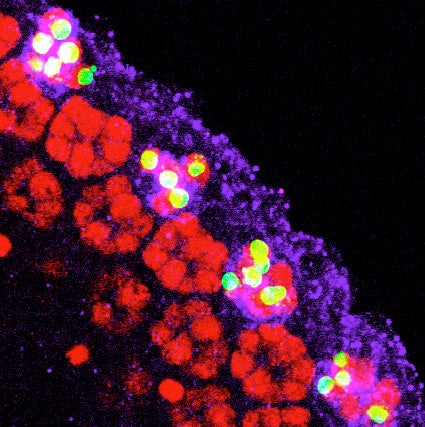 During development, cells must make many decisions to ensure the proper specification of cell fate, including whether to live or die by programmed cell death (apoptosis).These decisions are controlled by intercellular communication, with cells influencing their neighbors by secreting signaling molecules which trigger biochemical cascades in receiving cells.
During development, cells must make many decisions to ensure the proper specification of cell fate, including whether to live or die by programmed cell death (apoptosis).These decisions are controlled by intercellular communication, with cells influencing their neighbors by secreting signaling molecules which trigger biochemical cascades in receiving cells.
My laboratory is focused on understanding the molecular mechanism of signal transduction of a class of secreted glycoproteins called Wnts. These signals are highly conserved throughout the animal kingdom and most of our work is on a Drosophila Wnt referred to as Wingless (Wg). Using the power of fruit fly genetics, we have performed several screens to identify additional components of the Wg signaling pathway.
One of the genes we identified, Pygopus, is required for Wg signaling in all tissues examined. It encodes a nuclear protein and we have evidence that it acts downstream of Tcf, a DNA-binding transcription factor that receives the Wg signal in the nucleus. We have identified vertebrate homologs of gam, and they appear to influence Wnt signaling in human cells in a similar way as gam does in flies.
We are continuing to work on these genes, as well as other genes that appear to be involved in general, as well as tissue-specific aspects of Wg signaling. An unexpected by product of one of screens we performed was the identification of several genes that influence apoptosis. For example, we identified a protein kinase that is required for normal levels of apoptosis in Drosophila embyros. This has become a second line of research in my lab. For both Wnt signaling and apoptosis, we plan to complement our genetic analysis with biochemical experiments to determine the molecular action of the gene products.
